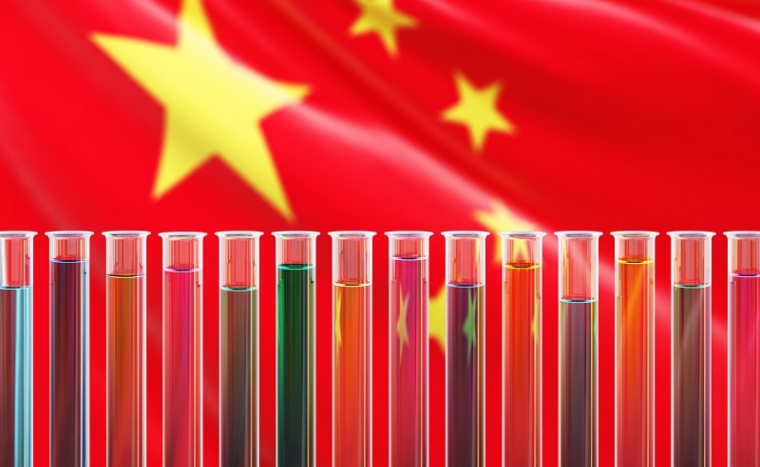Multinational Companies in China’s Chemical Industry
Chemical MNCs show strong verbal commitment to China, but the real situation is somewhat underwhelming.

Many Western chemical companies highlight the importance of China for their business, as evidenced by examining statements from 10 such companies (c.f. end of this article). There are several obvious reasons for this focus on China.
The first and probably most important one is the large share that China has of the global chemical sales — with 41%, this share is substantially higher than that of NAFTA and the EU combined.
Second, China is not only the biggest but also still among the fastest-growing markets. For example, BASF forecasts a 2021 increase of chemical production of 6.3% in China compared to an increase of 2.5% in advanced economies. And CEFIC predicts that by 2030, China’s share of global chemical sales will have risen to 49% from its current 41%.
A third factor that is becoming increasingly important is that China is taking the center stage for innovation in several industries that are key customers of the chemical industry. This includes sectors such as automotive (shift to EV, growing importance of engineering plastics), energy (solar, wind), bioplastics and electronics.
However, at least the first two reasons — substantial market size and high growth — are hardly very new. It is therefore of interest to check how the various company statements about the importance of China match with reality — the actual presence of these companies in China. Unfortunately, relevant data is relatively patchy as there is no established format for companies to describe their China presence, and public information about the relative profitability of the Chinese businesses are almost completely unavailable. Still, the limited data available for the 10 companies cited above allows for some general conclusions.
China Share of Global Revenue
For the companies for which this data is publicly available, this share ranges from 8% for Evonik to 24% for Wacker, with many companies in the range of 10–15%. For a few companies for which older and newer data is available, the China share of sales has typically only increased relatively modestly (by 1–3%).
Overall, these China shares seem relatively modest given China’s 41% share of the global chemical market. Arguably, a perfectly global chemical company would thus also have 41% of its chemical sales in China, a value not even closely approached by even those companies (like Wacker) for which China is their biggest market. Also, the relatively limited increase in the China share over the past decade or so is somewhat surprising and an indication that the appreciation of China as an important chemical market alone may not immediately bring an increase in the relative share in the country.
China Share of Employees
For all companies for which relevant public data is available, the share of employees in China is lower than the share of sales, with typical values ranging from 7–10% and only in rare cases substantially exceeding this share (e.g., Covestro with 18%). This is an indication that for most of these multinational companies (MNCs), China is still more of a secondary location with limited importance for support functions such as R&D, administration etc. It also suggests that the companies still to a substantial extent rely on imports of products into China (and thus a comparatively lower share of production employees in China). Covestro is a bit of an outlier in this regard as China is both a huge production site for the company and the location of the headquarters of a business unit, polycarbonates.
China Sales Growth
China sales growth figures of the companies examined tend to be relatively modest, reaching annual compound growth rates (CAGR) of between 4–7% or in a few cases even negative growth, though these figures may be misleading as they have not been corrected for divestitures and acquisitions. In any case, given that the China chemical market grew at a CAGR of 12.9% in the period from 2009 to 2019, the sales growth figures of multinational chemical companies in China are low. They clearly indicate an overall loss of market share of the MNCs in China.
Number of Production Sites in China
Unsurprisingly, most companies examined now have a substantial number of production sites in China, typically at least three, though for BASF, the number of production sites in Greater China is as high as 29. Number of China Sites: Typically, several (often around ten), lower for smaller players, more for big ones (e.g., BASF: 29 in Greater China). The sites tend to include major sites with multiple plants (e.g., of Celanese in Nanjing) along with smaller sites elsewhere, some of which are the results of M&A rather than of a deliberate site extension strategy.
Investment in China
Most companies continue to invest heavily in China. While this investment is particularly strong in expanding local production capacity, additional investments include those in R&D centers and acquisitions of local companies. BASF — with its current $10 billion investment in a new Verbund site at Zhanjiang, Guangdong — clearly takes the lead regarding investment size. Most recent investments by other companies are much smaller (range between $ 50 million and $ 300 million). Still, these investments indicate a willingness to spend resources on strengthening market positions in China.
China Strategy
While explicit statements on China strategies of individual companies are rare, general company statements on the importance of China (see above) indicate that China is indeed regarded as strategically highly important.
China Organization
Generally, the companies observed are — as it is the current fashion — organized primarily by global businesses rather than by countries. In theory, this should allow for a stronger rather than for a weaker focus on China, as each individual business should be able to spend a large share of its resources on the promising Chinese market. In reality, the effect may be the opposite, as most businesses still have their headquarters located in Western countries, and the leaders at these HQs may be reluctant to move certain functions away from the HQ location and into China.
Conclusion
While chemical MNCs show a strong verbal commitment to China, the real situation is somewhat underwhelming. Sales and sales growth are both substantially below the potential of China’s chemical market, and most of the recent investments are of a scale unlikely to drastically change this picture.
A recent study by the American Chamber of Commerce in China — which included 19 chemical companies — hints at some reasons for this underperformance. 74% of the chemical companies stated that local competitors are faster at bringing products to markets. In addition — and quite likely related — the chemical companies involved in the study were the least confident among all industries in their headquarters having a sufficient understanding of the opportunities available in China.
On the other hand, the survey also highlighted the good perspectives for foreign chemical companies in China, demonstrated both by the substantial rise in operating margins from 2019 to 2020 and the high share of chemical companies (58%) expecting China revenues increasing by 11% or more compared to global revenues in the next three to five years. This should be incentive enough to tackle the issues that currently slow down the growth of foreign chemical companies in China.
Author

“Sales and sales growth of multinational chemical companies are both substantially below the potential of China’s chemical market.”
China’s importance for Western chemical companies
Allnex: “China has become Allnex‘s largest single country market and strategic base in the world.”
Arkema: “As the second largest national market for the Group, the Chinese market plays a pivotal role.”
BASF: “The major part of all the growth globally is China, with other countries not contributing much.”
Celanese: “Celanese is committed to expanding its leadership position in the region.”
Clariant: “China, where the future of our company will be decided.”
Covestro: “China and Asia are central to our global strategy.”
Dow: “Dow has the vision to grow China into Dow‘s largest market.”
Evonik: “Evonik regards China as one of the driving forces of the global economy.”
Lanxess: “Asia, and in particular China, is a key growth region for Lanxess.”
Wacker: “China has become Wacker’s top market worldwide.”

















